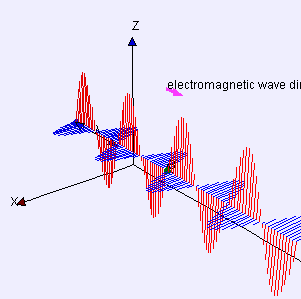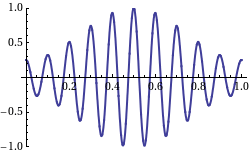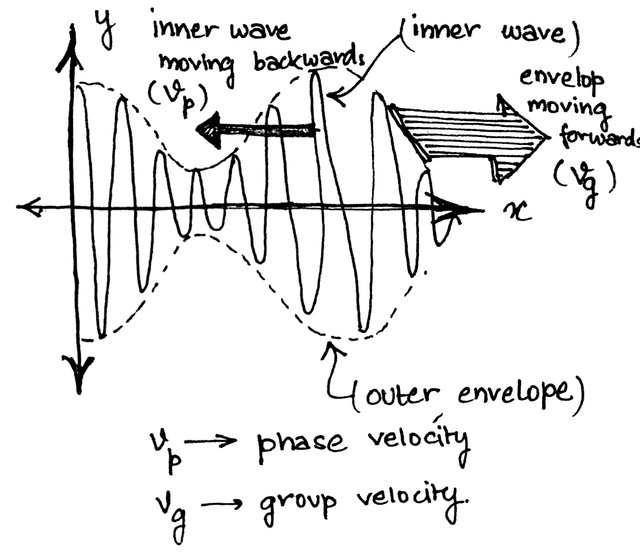So, as we know light bends as it passes through a material medium, and changes its speed, what happens to the photon ? It must change in some way as well right ? ...to change its speed ?
No friend, that is not true.
Photons do not change as they pass through different media as long as they are not being absorbed.
It is as if assume an army of soldiers marching as a rectangular troop, and they have to cross a muddy area diagonally while staying together, moving in a rectilinear fashion as shown below :

[©https://www.google.co.in/amp/s/johnvagabondscience.wordpress.com/2009/03/17/refraction/amp/]
So, now if you look carefully, the first soldier to enter the mud gets slowed down while his companion to the right is still moving with full speed on the pavement. This mutual difference in speed causes every pair / row of soldiers to bend, and eventually the entire troop ends up going along a bent path causing refraction. The same thing happens with a beam of photons tries to obliquely traverse through an optically denser medium.
Now, the next logical question will be - Why the change in speed in the first case ?
Well, in the case of the soldier, some of the most essential properties responsible for the motion of a soldier on a particular terrain is changing and that is the friction between their feet and the ground. If the friction is less, the soldier wouldn't be able to efficiently push the ground back using his feet, and hence by Newton's Third Law of Motion, the ground wouldn't be pushing him forward as much as it would on the pavement which accounts for the net decline in speed.
(Newton's Third Law : "Every action has an equal and opposite reaction". So, if you hit your friend, be prepared to be hit by them in return...and so you can see, the action and the reaction are acting on two different objects!)
Similarly, for understanding the decline in speed of a photon as it passes from an optically rarer medium to an optically denser one, we need to understand how light moves / propagates as we did in the case of the troop of soldiers.
As you must be already aware that light is an Electromagnetic wave.
So how is it generated ? Well, you must have seen an electric bell. Inside the bell, a current flows through a coil(basically an electromagnet-i.e. a coil wound around a magnetic metal core), and as it starts flowing, the coil generates a magnetic field momentarily due to the change in the amount of current flowing through it i.e. a change in the electric field associated with the electrons flowing through the coil.
SO, A CHANGE IN THE ELECTRIC FIELD(E) PRODUCES A TRANSIENT MAGNETIC FIELD(B)
And similarly, if you have ever seen a dynamo(a magnet made to turn rapidly inside a coil which in turn generates a flow of current through itself) you must be already aware that Nature is quite symmetrical, meaning the converse is also true...
A CHANGING MAGNETIC FIELD(B) CAN GENERATE A TRANSIENT ELECTRIC FIELD(E)
Now, we have all the ingredients needed to describe the basics behind light propagation.
If we somehow generate a transient electric field oscillating at extremely high frequencies - we have done it ! LIGHT !!
The rapidly changing magnetic/electric field will in-turn generate a corresponding component of the other form. And so, the electric field generates the magnetic, that magnetic field further generates an electric one and this goes on-and-on and that is how light propagates.
©Wikipedia
But then, what decides the speed of light ?
Now let's imagine dropping a stone gently on the surface of water. Ripples are generated, and these ripples move outwards at a speed characteristic to water which is nearly independent of how gently/forcefully the stone was thrown. All ripples travel at the same pace.

Similarly, in vacuum, the electric and magnetic ripples travel at the same speed c = 299,792,458 m/s which is characteristic for vacuum.
Now, let's make light pass through some medium. The medium has electrons revolving around the nucleus, thus generating a magnetic field. When light passes through a material medium, it interferes with the field systems of the electrons, this causes a lag in the propagation of light, and its speed decreases. Actually what happens is that the light inside the medium is not just because of the photon that entered, but also because of it's interactions with electrons which sort of get disturbed by the light, and start producing extra EM waves in synchrony with the passing light wave. These two waves interact and superpose with each other to form the net light wave travelling through that medium. But, since this new light wave is a superposition of two different waves of slightly different amplitudes and frequencies, the net wave ends up moving forward with a different speed. This speed may be greater or less than the speed of the original light wave !
It CAN BE EVEN BE GREATER than the speed of light itself.
This is because, the speed we are talking about is not the speed of individual waves of light as such, it is rather the speed of the resultant wave which seems to have formed after the addition of two or more different waves of different frequencies.
NOTE : photons don't show particle behaviour until they interact with matter, and hence, do not carry any kinetic energy, as they have no mass. So, all of the energy is possessed intrinsically in the ripple movement of the electric and magnetic components of a photon and this energy is quantitatively defined as Planck's Constant times their frequency.
Now, as a photon collides with matter, it is this ripple energy that gets absorbed by the compatible electrons. So, the photon wouldn't lose this energy until it gets absorbed.
As a result, when a photon passes through a transparent medium, it can't afford to loose its energy (as explained in this post : https://steemit.com/steemstem/@medro-martin/transparency-an-illusion-to-the-human-eye-a-hilarious-simple-explaination), and hence its frequency doesn't change since it isn't interacting with any material, but rather only with the fields. But then, there is also some resistance to its EM ripples. The faster a light wave oscillates, the higher the frequency of the light, the higher the frequency of oscillation of the electric and magnetic component fields, the stronger are its interactions with the intrinsic fields produced by the electrons in the material, the more resistance the beam faces when passing through the material medium, the larger the drop in its speed is, and the more it bends when passing through a medium, the larger is the refractive index of the medium wrt the particular light wave.
[©Wikipedia]
So, there definitely are materials which actually increase the speed of light and have a negative refractive index. But, that's not a problem as that speed doesn't correspond to any individual light wave, but rather is the net speed of a group of them with slightly different frequencies(the different frequencies arising from the waves from electrons themselves, and not necessarily the original light beam).
So, essentially photons travelling through a medium come out unaffected as long as they don't interact with any material partical in which case, they will be absorbed.
I hope this solves the doubt.
This video may help a bit :
[©Sixty Symbols : https://www.youtube.com/channel/UCvBqzzvUBLCs8Y7Axb-jZew]
--------------------(Concise Answer)-----------------------
In short, I would like to say that when we talk of the speed of light wave passing through a material medium, we talk of the speed of a group of superposing waves made up of the original light wave plus the waves produced by the electrons which get effected by the electromagnetic fields of the light waves passing around them. This net wave can have a speed different from that of the original light wave, and thus behaves slightly differently as in the speed, bending etc.
But, what is important to understand is that the light inside the medium is basically a sum of waves, and that's why it appears to have changed. The individual photon remains the same.
In other words, when two or more waves combine, the resultant wave has to essential properties :
- The "Phase velocity" : the velocity at which the phase of the wave is traveling.
- The "Group velocity" : the velocity at which the wave envelop is traveling. This is the velocity which is considered when talking about the speed of light in a medium.
Now, carefully look at this resultant wave(formed by the superposition or adding up of two waves of different frequencies) and you should be able to tell that though the wave(phase) is actually traveling backwards, its envelope and hence, the "Group" is traveling in the forward direction ! :
[©By Geek3 - Own work;This mathematical image was created with Mathematica., CC BY 3.0, https://commons.wikimedia.org/w/index.php?curid=14772688]
[©Martin Medro]
So, when a high frequency wave(here it is the light) adds up with a low frequency wave(the waves produced by the electrons which are unable to oscillate at exactly the frequency of the light, due to some sort of inertia), what happens is that the low frequency wave modulates the amplitude of the high frequency wave and thus becomes responsible for the formation of the outer envelope, though the actual frequency of the wave(inner one) comes from the high frequency constituent. And thus though, the photon itself is traveling at it's own characteristic speed and frequency(and that is why the color of the light doesn't change when it passes through glass), but the envelop travels at a different altered speed, and that is the culprit of all the confusion !!
----------------------------(End of Concise Explanation !)----------------------------
The exact explanation will be complicated requiring one to solve long and complex equations in Quantum Mechanics, and this is the simplest we can get I guess !
Thanks for your time and patience.
Keep learning !
M.Medro




Congratulations @medro-martin! You have completed the following achievement on the Steem blockchain and have been rewarded with new badge(s) :
Click here to view your Board
If you no longer want to receive notifications, reply to this comment with the word
STOPDownvoting a post can decrease pending rewards and make it less visible. Common reasons:
Submit
Thanks for using the the steemstem tag.
We would love it if you only use images with a copy-right license. For example check out how it is done in the following post -> https://steemit.com/steemstem/@gra/trekking-tech-basic-
Downvoting a post can decrease pending rewards and make it less visible. Common reasons:
Submit
Oh ! Done ! I'll definitely take care from next time onwards.
I wasn't aware of the Pixabay license.
Until now I was depending completely upon Wikimedia Commons and Google Images.
Thanks.☺
Let me know if there is anything else that can be improved...
Downvoting a post can decrease pending rewards and make it less visible. Common reasons:
Submit
The best way to do it is to put a Source link and then a link to the copy right license, for example CC0 (these are dead links, but they are just to illustrate the idea :o) ) If you cannot find a copy right license then it is better to not use the image (I am guessing that your first image doesn't have a licence?)
Downvoting a post can decrease pending rewards and make it less visible. Common reasons:
Submit
Yes, I didn't check its license.
Ok. That's neat !
I'll take care. ☺
Downvoting a post can decrease pending rewards and make it less visible. Common reasons:
Submit